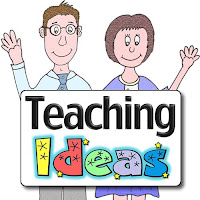MICRO TEACHING
INTRODUCTION Micro Teaching
- A method of training/ teaching technique.
- Simplifies the complex teaching process so
that the student-teacher can cope with it.
- Scaled down Teaching Encounter.
- Teaching reduced in class size, concept,
time and the number of pupils.
General Teaching Skill – Allen &
Ryan
1.Stimulus
Variation
3.Closure
4.Silence
and non-verbal cues
5.Reinforcement
of student participation
6.Fluency
in asking questions
7.Probing
questions
8.Higher
order questions
9.Divergent
questions
10.Recognizing
attending behavior
11.Illustrating
and use of examples
12.Lecturing
13.Planned
repetition
14.Completeness
of communication
Micro Teaching Process
Class size – reduced about 5-10 pupils
Length of the lesson
– reduced to about 5-10 minutes.
ž
Focus
– one teaching skill at a time; and not on the content of the lesson.
Components of Micro Teaching
Students [5-10]
Micro Teaching Cycle
Selection of
particular skill
žPresentation of a
model demonstration lesson – a particular skill
žObservation of a
model lesson
žCriticism of the
model lesson
žPreparation of a
micro lesson plan
OBSERVATION OF
TEACHING SKILL
žPeer/college Supervisors
ž
žRating
based on frequencies
ž
žCan
be recorded in a tape recorder or on a videotape
Coding Proforma – Skill of Stimulus
Variation
III. Feedback
Individual Feedback
to student teachers. ž
Include the tallies
and ratings on observation schedule.
Interpretation about
the performance.
ž
Micro teaching Settings
1.Writing
instructional objectives
2.Introducing
a lesson
3.Fluency
in questioning
4.Probing
questions
5.Explaining
6.Illustrating
with the example
7.Stimulus
Variation
8.Silence
and non-verbal cues
9.Reinforcement
10.Increasing
pupil participation
11.Using
black-board
12.Achieving
closure
13.Recognizing
attending behavior
TEACHING SKILLS

STAGE
žINTRODUCTORY
STAGE
ž
žPRESENTATION
STAGE
ž
žCLOSING
STAGE
žWriting
instructional objectives
ž
Organizing
the content
ž
žIntroducing
the lesson
ž
žPresentation
skills
ž
Questioning
skills
ž
Management
skills
ž
žAchieving
closure
ž
Giving
assignments
žEvaluating
the pupil`s progress
ž
Diagnosing
pupil learning difficulties and taking remedial measures
Major skills of Micro teaching practiced
in Teacher Training Institutions
Skills of introducing
a lesson
žSkills of explaining
žSkills stimulus
Variation
žSkills of Questioning
žSkills of
Reinforcement
žSkills of
Illustration
žSkills of Black Board
Writing
Skills
of achieving closure
Linking with past
experience
žLink between
introduction and main parts
žUse of appropriate
devices/ techniques like questioning, example, etc.
Using beginning and
concluding statement
Using explaining
links
žQuestion to the test
students understanding
žQuestion follows by
correct responses
Skills of questioning
keep six honest serving man,
They taught me all I know
Their names are
what
why
when
how
where
&
who
Positive
Verbal Reinforcement
žExample: ‘good’,
‘fair’, ‘excellent’
žž
Positive
non-verbal Reinforcement
žExample: ’Smiling,
nodding the head, clapping, asking the students to clap
ž
Negative
Verbal
žExample: ‘No’,
‘Wrong’, ‘stop it
ž
Negative
non-Verbal
žExample: Beating,
raising the eyebrows
ž
Skills of Stimulus Variation
Teacher movement
Teacher gesture
Change in voice
Focusing
Change in the
interaction pattern
Pausing
Student’s physical
participation
Aural visual
switching
žFormulating simple
examples
ž
žFormulating
interesting examples
ž
žFormulating relevant
examples
ž
žLinking examples with
day-to-day life
I.Legibility of
Handwriting
v Adequate
spacing between two letters.
v Adequate
spacing between two words.
v The
size of a letter is large enough to be read from the far end of the room.
v The
size of the capital letter is just bigger than the small letter.
v All
the capital letters are same size .
v All
the small letters are of the same size.
The words and the
sentences written are parallel to the base of the blackboard.
Adequate spacing
between the lines.
ž
žRetention of the
relevant matter on the blackboard.
III. Appropriateness
of Written work on the Blackboard
ž
Continuity of the
points
žBrief and simple
points
žUnderlining the
important points
žUse of color and
chalk pieces
žDiagrams, large,
clean and proportionate size diagrams
ž
Question
and statement of the teacher related to the consolidation of the major points
covered during lesson.
ž
Opportunities
provided by the teacher to the pupils for linking the present knowledge with
the past knowledge.
ž
Opportunities
provided by the teacher to the pupils for applying the knowledge gained during
the lesson to the new situation.
ž
Opportunities
provided by the teacher to the pupils for linking the presents knowledge with
the pupil’s future learning.
Integration of Skills
žBridge the gap
between micro teaching and macro teaching.
Micro teaching –
links lesson – Macro teaching






















Walang komento:
Mag-post ng isang Komento